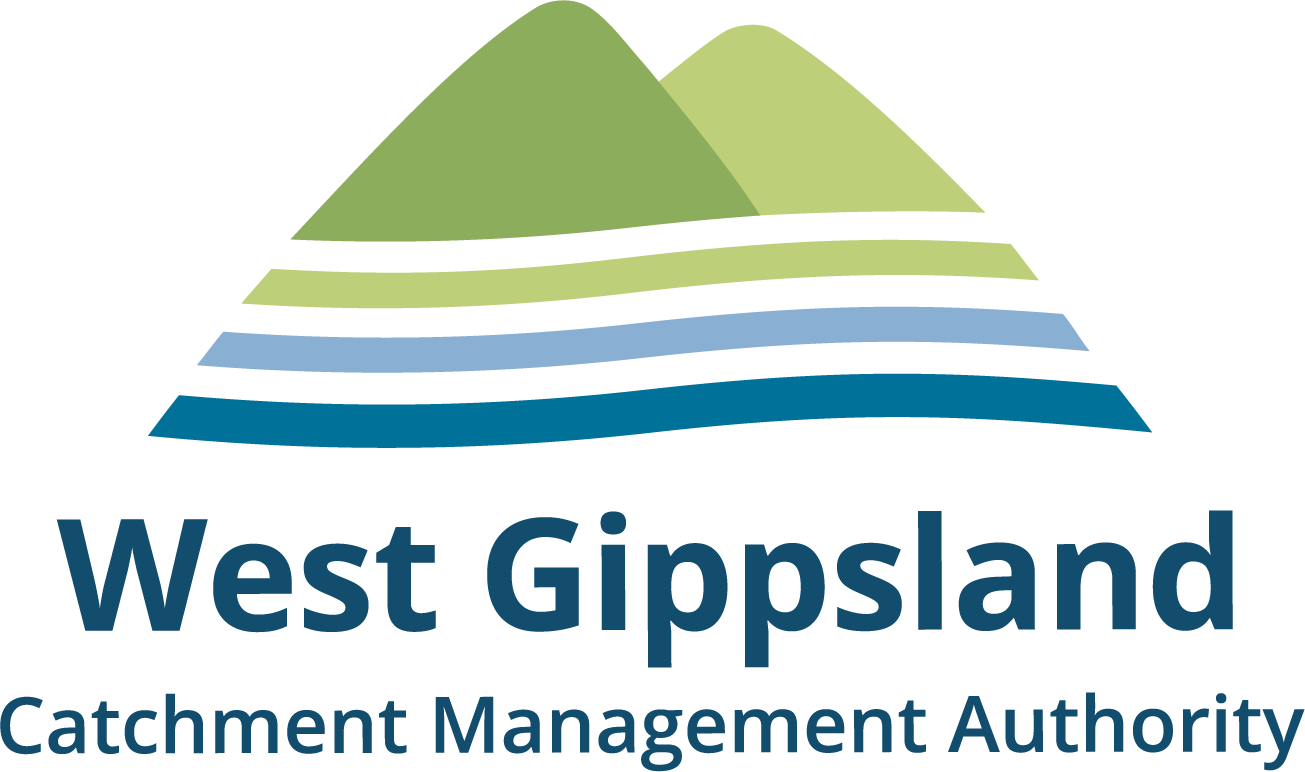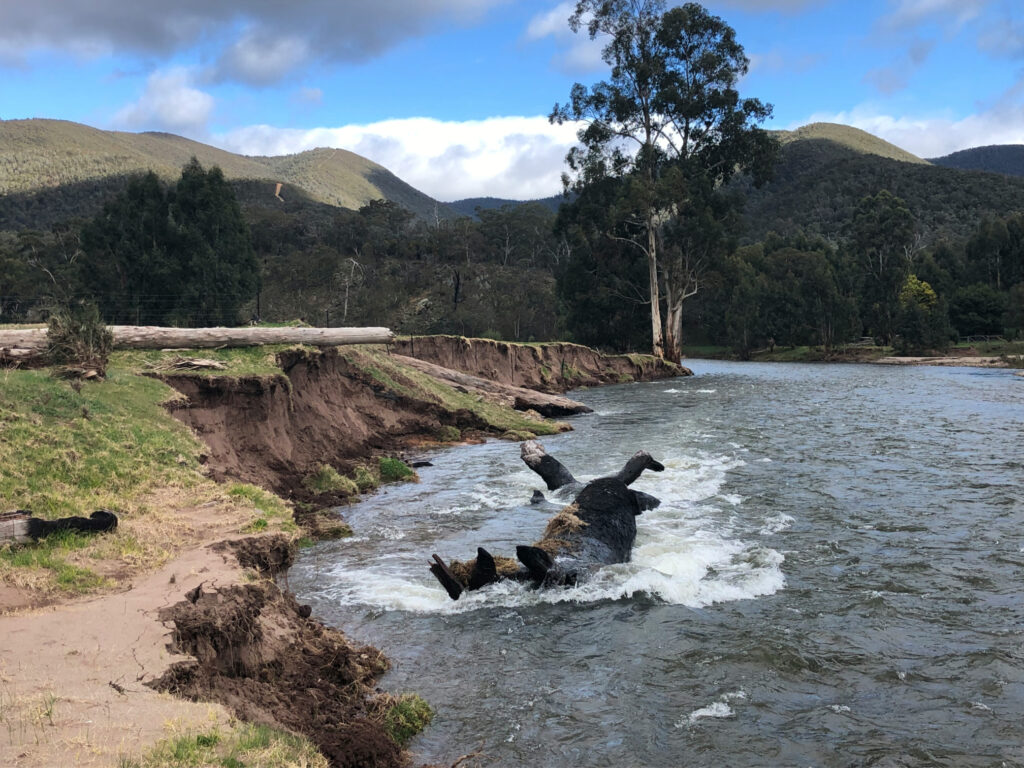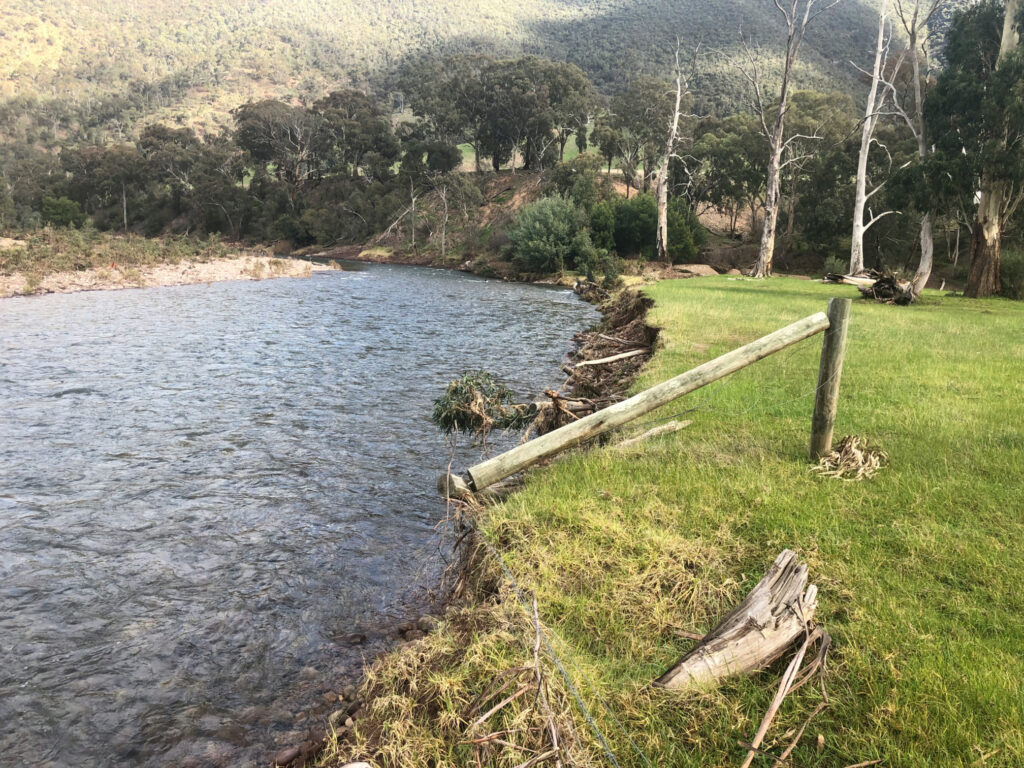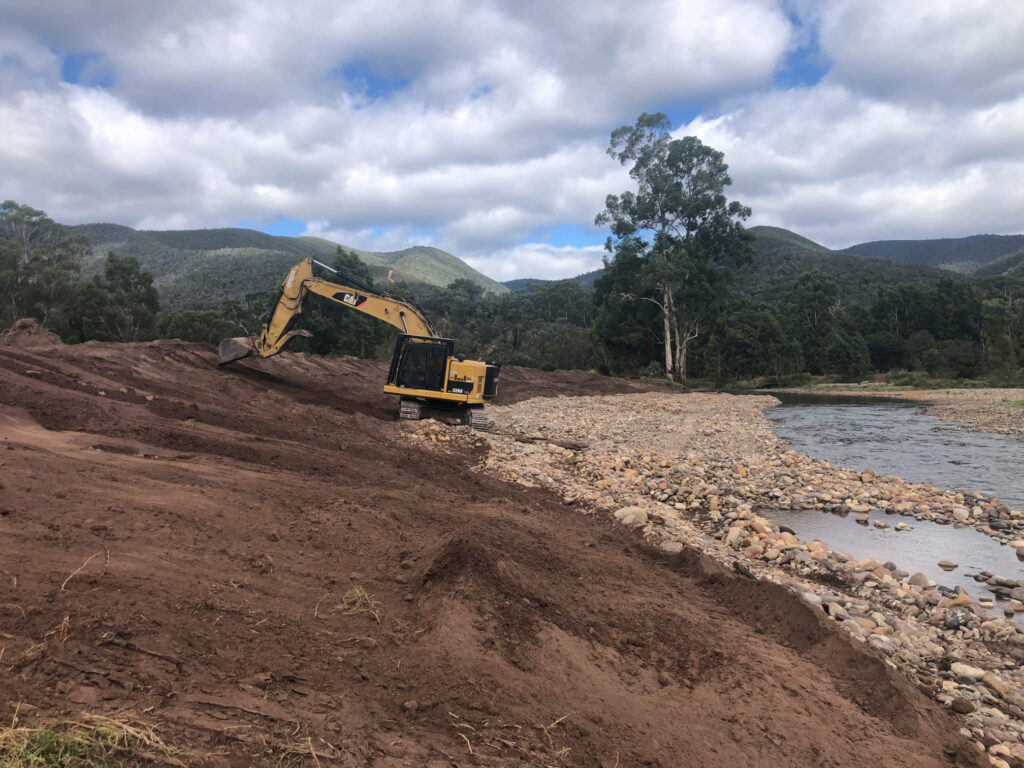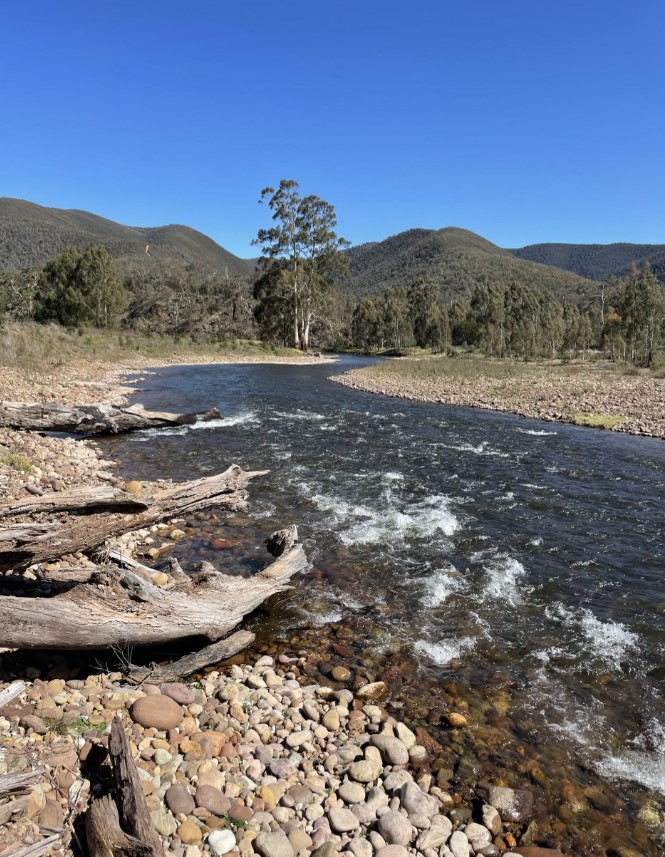Building flood resilience naturally
After the June 2021 floods subsided, property managers at Glenfalloch Station (near Licola) swung into action to repair the damage to the waterway with the help of West Gippsland Catchment Management Authority.
The team used their experience of previous floods to achieve the best results by working with natural materials and processes, focusing on long-term resilience and ‘allowing space for the river to move’.
Glenfalloch Station (Gunuaikurnai Country) is a major agricultural property located at the base of the Alpine National Park near Licola in West Gippsland. It includes 23 kilometres of Wirn Wirndook Yeerung (Macalister) wild river frontage.
The one-in-30-year-flood event of June 2021 dumped 250 millimetres of rain to the region in 24 hours, and saw the river rise to 4.2 metres in some parts.
When the floodwaters subsided, Karen Tymms, Environment Manager at Glenfalloch Station and Elsa Burnell, Project Coordinator for West Gippsland CMA, got to work. The river is prone to flooding and the team has worked with the CMA on flood recovery works before to protect and maintain the health of the waterway.
“When we first went up there after the 2021 floods, we were probably expecting more damage,” says Elsa.
“But we noticed that works done after the 2007 flood had held up really well,” said Karen.
They started by assessing the damage, then planning and undertaking recovery works.
Once the wet weather eased and river levels were low enough, the team began their work stabilising the most severely eroded sections of riverbank. Up to 200 metres of raw, vertical bank was smoothed into a gentle slope using a technique known as ‘battering’.
Logs and woody debris washed down by the floodwater were also salvaged from the paddocks and dug into the bank to help stabilisation. These natural materials provide ideal habitat for frogs and fish, further enhancing the health of the river.
The most critical step in flood recovery, according to Elsa, was what came next.
“All the works we do such as bank stabilisation, weed removal and fencing is preparation for putting plants in the ground – it’s the culmination of the project. Trees and shrubs provide the essential last step in flood recovery, acting like the reo in concrete to stabilise banks and to slow the water down in future flooding events. Almost 7,000 plants were planted across the flood affected sites”, said Elsa.
After 18 months, the repaired sites were in a strong shape to withstand future floods, with the banks stable and revegetation growing strongly.
Farming on the mighty Macalister
Karen says what’s interesting about major floods is seeing how the river moves, and where the tributaries flow afterwards.
“The Macalister is a dynamic river, so it has the tendency to move.”
Sometimes damaged fences need to be realigned rather than simply put back in the same place, which is what happened after the 2021 event.
“We did recalibrate one of the fences after seeing where the flood had gone,” said Karen.
A total of 3.2 kilometres of fencing was repaired or realigned as part of the June 2021 flood recovery works.
Building flood resilience
The waterway at this site was impacted further in October 2023 from another major flood event.
“Some of the woody debris we dug into the banks had shifted a bit but there was no major channel change, and the battered banks and young revegetation held up really well,” said Elsa.
She says that this focus on resilience and health of the river is testament to a sustainable, long-term approach to flood recovery championed by Karen and the Glenfalloch team.
“It’s great to work with property owners who understand the river as a dynamic system. These days we try to stay away from rock armouring every eroding bend. While still a valid approach, we often see that this just shuffles the problem down or up stream. Working with landholders who are keen to work with the river and implement nature-based solutions is just really awesome.”
Flood recovery works to repair damage to the existing waterway health works along the Macalister River at Glenfalloch were funded by the Department of Energy, Environment and Climate Action (DEECA).
